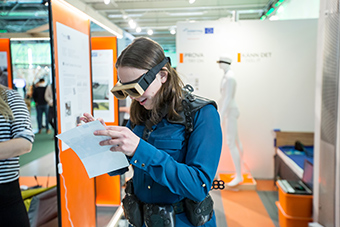BaltSe@nioR set out to address the societal challenge of aging communities in the Baltic Sea region and the lack of innovative, smart furniture and interior design solutions adapted to their needs. The project tapped into both the demand and the market potential for these solutions to encourage the regional manufacturing industry to get involved.
- 26 July 2019
We have a strong belief that the recognition we are gaining with our project activities significantly raises awareness and influences the attitude towards the senior population – not only among furniture companies as our target group, but reaching much further to the end users –and those who take care of them: journalists, interior architects and also authorities and politicians, step-by-step transforming the EU into a better and friendlier place for seniors. It was an enormous honour for the entire BaltSe@nioR team, which gave us additional motivation to work even harder.
Coordinated by the faculty of wood technology at the Poznan University of Life Science in Poland, the project combined expertise from the fields of furniture and design with information technology and robotics, and with applications and databases from nine countries in the Baltic Sea Region.
It provided the region’s manufacturing industry with important new prospects by integrating new technologies into traditional furniture production. At the same time, it developed modern tools to increase the elderly’s quality of life.
Integrating modern technology with traditional design
To facilitate this kind of product development, the project created a prototype of a 3D-printed aging suit, which enables the user to experience the physical limitations of an aging body. This kind of empathic recognition and acknowledgement of the issues seniors face in their own households was intended to trigger manufacturing companies to introduce new ideas and products.
Aside from the aging suit, the project developed prototypes of a smart chair that encourages the user to perform more physical activities while seated, through interactive videogames connected to sensors in the chair. Other developments include a skirting board with an integrated fall detection system, and a mirror that displays personalised messages about weather conditions or the plan of the day, and 3D-printed furniture handles that can be adapted to the shape of a senior’s grip. Project members adapted an existing Polish armchair design from the 1960's to the needs of contemporary seniors. These tailored prototypes represent the possibility of integrating modern technology with traditional furniture design and have served as an inspirational case study to encourage companies to innovate.
In doing so, the project encouraged companies in the Baltic Sea region to increase their competitiveness, their level of innovation and their share in an untapped market. At the same time, the project addressed the need for improved quality life of the region’s senior population in their homes.A virtual library, accessible to all
BaltSe@nioR set up a virtual library of knowledge about senior society in the region. The library showcases the results of the developed methods and design tools. A free, 3D downloadable and printable version of the aging suit is available to any interested party or manufacturer. Companies can use the library to verify the needs of seniors in a given country, adjust their offer, and more easily enter foreign markets.
Approximately 90 million elderly people live in Europe, accounting for 18% of its entire population. By 2030, that number is expected to have increased to 24%. Despite the societal challenge of aging communities, the needs of the elderly are not being sufficiently addressed by furniture and home equipment manufacturers.
To carry out its objectives, the project relied on Germany’s and Poland’s position as being two of the world’s most important and biggest furniture producers and exporters. It gained high visibility with its achievements and products during conventions such as the Stockholm Furniture and Light Fair and during Milan Design Week. The project outcomes were presented to European policymakers, strengthening its international recognition.
Videos
3D printed Age SimulatorHow to use the BaltSe@nioR Virtual Library
Total investment and EU funding
Total investment for the project “BaltSe@nioR: Innovative solutions to support enterprises in the Baltic Sea region in product development aimed at raising comfort and safety of seniors living at home” is EUR 2 400 000, with the EU’s European Regional Development Fund contributing EUR 1 700 000 through the “Interreg Baltic Sea Region” Operational Programme for the 2014-2020 programming period. The investment falls under the priority “Jobs, growth and investment”.

